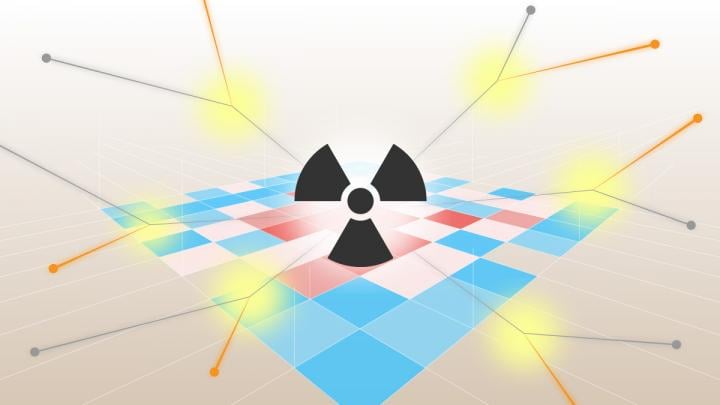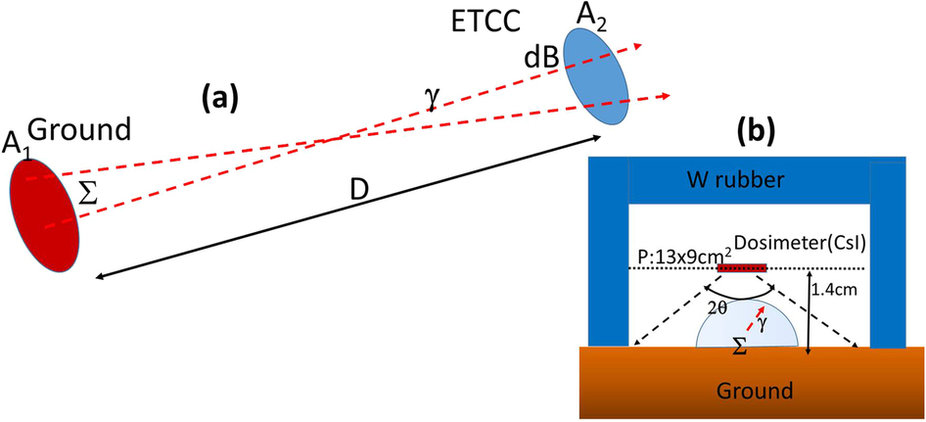KYOTO, Japan, March 31, 2017 — A novel camera for visualizing radioactive hot spots is being used to develop radioactivity maps for use in the decontamination of the site of the 2011 nuclear accident in Fukushima. The Electron Tracking Compton Camera (ETCC) can perform simultaneous measurement of brightness and spectrum of MeV gamma rays.

A Kyoto University team has developed a new camera to visualize radioactive hot spots. Courtesy of Kyoto University/Eiri Ono.
The research team at Kyoto University that constructed the camera performed an on-site pilot at three contaminated locations in the vicinity of the Fukushima Daiichi Nuclear Power Plants. They converted the emissivity of the radioactivity to the 1-cm dose, using only the brightness measured by their ETCC.
To ascertain the sources of a dose of contamination, the directions of all the gammas as well as their energies, if possible, must be determined. This means that the brightness distribution around the point must be obtained. The Kyoto team’s ETCC provided a well-defined point spread function (PSF) by reconstructing a direction of each gamma as a point.
“We constructed an Electron Tracking Compton Camera (ETCC) to detect nuclear gamma rays quantitatively. Typically this is used to study radiation from space, but we have shown that it can also measure contamination, such as at Fukushima,” said researcher Toru Tanimori.

Schematic explanation of the relation of radioactivity on the ground to the brightness measured by ETCC. Schematic explanation of the correlation between emissivity (brightness) (Σ) on the ground and the measured gammas (dB) within a unit of solid angle in the FoV of the ETCC, where A1 and A2 indicate the areas on the ground and ETCC, respectively, and D denotes the distance between the ground and the ETCC (a). Schematic view of the positional relation of the ground, dosimeter (Horiba PA-1100) and tungsten rubber for our 1-cm dose measurement (b). The top and four sides of the dosimeter are covered by tungsten rubber to shield it from the downward gamma ray radiation. Courtesy of Kyoto University/Scientific Reports.
Using the ETCC, the team confirmed that the dose distribution was consistent with the measurement taken by conventional mapping instruments. The imaging spectroscopy, boosted by Compton-edge-free spectra, further revealed complex radioactive features in a quantitative manner around each individual target point in the background-dominated environment.
The team identified “micro hot spots” of residual caesium contamination even in an already decontaminated area.
The ETCC not only provided the direction of a gamma, but also enabled the team to distinguish correctly reconstructed gammas from those mis-reconstructed.
“Quantitative imaging produces a surface radioactivity distribution that can be converted to show dosage on the ground,” said Tanimori. “The ETCC makes true images of the gamma rays based on proper geometrical optics.”
The results of the pilot showed that the ETCC performed exactly as the geometrical optics predicted.
Current methods for measuring gamma rays do not reliably pinpoint the source of the radiation. According to Tanimori, “radiation sources including distant galaxies can disrupt the measurements.”
So far, the most successful evaluations for the environmental radiation in contamination areas have been made by backpacks and unmanned helicopters using either a spectrometer or conventional dosimeter. Using these methods, quantitative and reliable 2D distributions of radiation have been successfully obtained after several measurements with overlapping fields of view were combined. This form of measurement requires considerable time and effort, making it challenging to use over a wide area.
Use of the ETCC in the pilot program demonstrated its versatility as a tool for measuring radiation in the field, and revealed its potential for application in many fields, including the nuclear industry, medical imaging, environmental monitoring and astronomy.
“Our ETCC will make it easier to respond to nuclear emergencies,” said Tanimori. “Using it, we can detect where and how radiation is being released. This will not only help decontamination, but also the eventual dismantling of nuclear reactors.”
The research was published in Scientific Reports (doi:10.1038/srep41972).